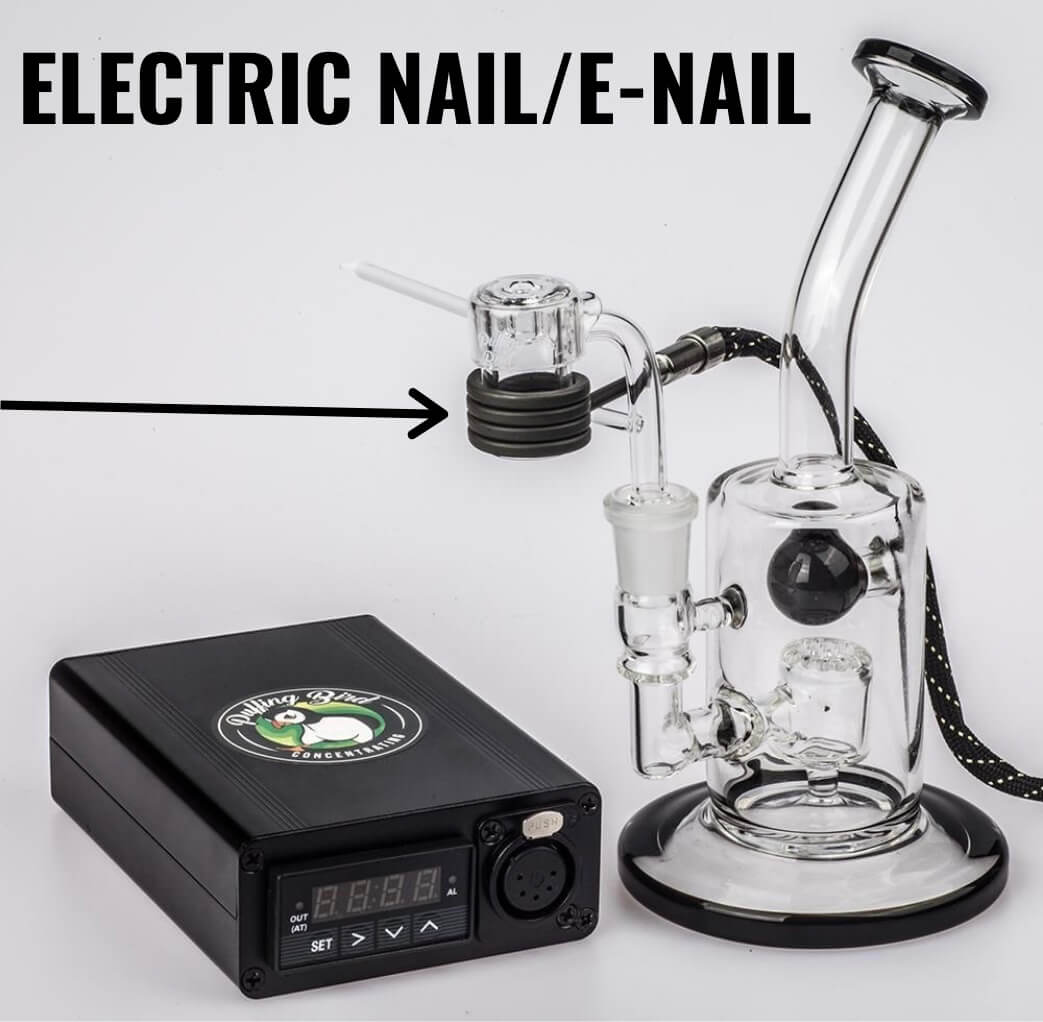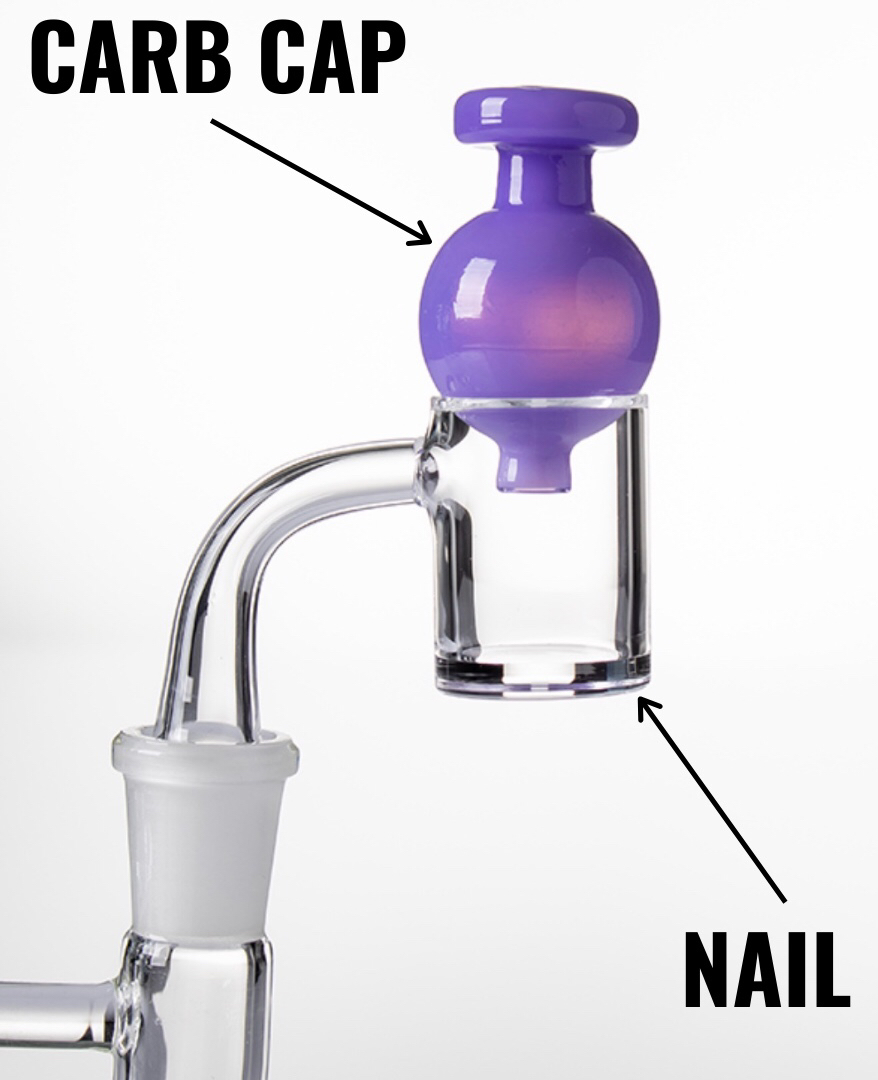While browsing the dispensaries inventory, you may have stumbled upon “concentrates” once or twice. Most of us are familiar with these potent products, but if you’re not, you’ve come to the right place! Let’s dive into what concentrates are, how they’re made and how to use them.
Think about concentrates as being the concentration of the cannabinoids and terpenes, basically all the good stuff from the plant. Patients with a higher tolerance will often gravitate towards concentrates to consume less but still obtain the same relieving effects.
Concentrates come in various different consistencies and have many different extraction methods. Let’s familiarize ourselves with the terminology that you’ll see.
Shatter, crumble, rosin, live resin, sauce, budder, are some terms you’ll see frequently. There are many names for our concentrates but what is the difference between them all? Well for one, the consistency will be different and number two, the extraction method and the post extraction method. All cannabis concentrates are made with solvents, like ethanol and butane or without solvents, like heat and pressure or solvent-less co2. The post extraction method is what give concentrates various types of consistencies. These various methods are why there are so many consistencies and extracts to chose from.
BHO Extraction
BHO stands for ‘butane hash oil’ because butane is the solvent used to extract the oils from the cannabis plant. A lot of concentrates are made by using this method, for example, shatter, wax, budder, etc. Within a BHO extraction there are various methods used such as open blasting, and a closed loop system. Open blasting is a method extractors typically steer away from because of not only the danger, but of all the wasted material. Open blasting consists of loading the plant material into a loaded tube and blasted with butane. Not only does this method come with the danger of working with flammable chemicals but it also a very wasteful method since more plant matter is wasted from this method than any others.
Most BHO extractions are performed by using a ‘closed loop system.’
A closed loop system achieved its name as so because it starts and ends in the same place. Let’s explore the closed loop system and how it works.
In a closed loop system, hydrocarbon, butane or propane are stored in what’s called the “solvent tank” and stored there under cryogenic temperatures. High grade butane goes into the first tank and under pressure, it is pushed through the “material tank.” The material tank is what holds the plant material that is being extracted, like the trim or nug.
Butane is passed through the material tank, where it bonds to the terpenes and cannabinoids, essentially stripping the plant of all these active compounds.
Then, the butane containing these compounds is then passed onto the third chamber, the “dewaxing colum.” The dewaxing process purges the plant of lipids, fats, and waxes to further purify the extraction. The extraction now proceeds to the collection chamber where heat and light are used as a distillation process to boil off the left over solvents, kind of like a double boiler. These leftover solvents are then brought back to the solvent tank for reuse, thus completing the closed loop system.
Most extractors prefer this method because you have much less wasted material, it is safer, and pure.
Dimethyl Ether (DME)
Another extraction method that is new to cannabis, but for the medical field and food industry, it’s been around for decades. DME is rapidly becoming a favored technique and efficient method because of its quick evaporation time. DME is a molecule that is almost identical to ethanol but changes the rearrangement of atoms, which means, it has the same weight as alcohol but behaves differently as a solvent. It is like liquid ethanol which makes it more manageable than butane, and also more polar than butane which leaves the final extractions with high concentration of terpenes and higher amounts of cannabinoids than BHO extractions.
Supercritical CO2 Extraction
A CO2 extraction is similar to a BHO extraction but, instead of using a petroleum based solvent like butane or propane, CO2 is a naturally occurring solvent. So natural in fact, that our bodies even produce it. So what is a supercritical CO2 extraction anyways? Well for one, this method is nothing new to the world of extracting. It has been used for decades, most commonly in essential oil and perfume extraction and even in the decaffination. A supercritical fluid extraction is the process of separating components from each other by using a particular type of solvent. These solvents are labeled as “supercritical” because, when they exposed to critical temperatures (31 °C) and pressures (74 bar) the display structures fluctuate between states of solid, liquid and gas. During this state of fluctuation, supercritical fluids are capable of breaking down structures where they can then be separated and fractioned.
The starting plant material also effects your concentrates. The overall quality of a concentrate will ultimately depend on the cannabis from which it derived. Many concentrates will indicate the quality of the starting material. Three popular “runs” (as they are called) are, trim run, nug run, and live resin.
Trim Run
Refers to concentrates that begin as the trim from the cannabis harvest. More specifically, the sugar leaves that are covered in cannabinoid rich trichomes (kief). These are not the big fan leaves that fan out from the stem but rather the small, hidden leaves near the stem of your plant. The sugar leaves are best used rather than the fan leaves because of the abundance in trichomes. Fan leaves also have trichomes but a far less than the sugar leaves, leaving them less concentrated and potent and therefore undesirable for these types of extractions. Trim is a popular starting material for hydrocarbon and distillate products (like the ones made with a closed loop system as discussed above) because extractors can efficiency strip away the less desirable material traits that the trim may posses.
Nug Run
Refers to concentrates that are extracted from nugs that are specifically grown for extraction. Some extractors prefer to use buds that tend to be the smaller buds from harvest, also known as “mids.” Other extractors will use the whole plant and large colas (the cluster of buds that grow very closely together).
Products that are labeled as “nug run” are generally the result of hydrocarbon extraction around are considered a higher quality since the extraction is coming from a better quality of material rather than the trim. The results of these extractions are geared toward strain specific chemical profiles.
Live Resin
Live resin and any other products labeled as “live” are concentrates that have been extracted before the cannabis plant has been dried and cured. To produce live resin, moments after harvest, the cannabis is frozen at subcritical temperature, prior to, and during the extraction process. This freezing method preserves the precious terpenes that dwell inside cannabis. The drying and curing process has quite a devastating impact on terpenes which is why live resin is extracted from the live plant. During this process the plant is ridding itself of moisture and chlorophyll, but at the same time, the terpenes are becoming subject to adverse conditions like overexposure to oxygen, light, increased heat and physical agitation, all of which can and will degrade terpenes.
Some of the different types of concentrates you’ll see:
Rosin
A solvent-less extraction process that uses a combination of heat and pressure to squeeze out the resinous sap from the beginning plant material.
While other extraction methods require extra cleaning to remove leftover solvents, this method does not require anything besides heat and pressure for a clean, flavorful, terpy extraction.
Shatter
Most concentrates are defined by the agitation they sustain during extraction.
Shatter, is defined by its cooling process, rather than by the agitation during extraction. Shatter involves a lengthy purge, heat, cool and repeat process that lasts about 48 hours. This transforms the sticky resinous mixture into the glossy, stiff, and brittle texture we know and love as shatter.
Budder/Badder
Also often referred to as, budder, batter, and crumble. These malleable and moldable textures of wax and budder are the result of a whipping process that incorporates air while evaporating residual solvent for a clean extraction. The more aggressive the whipping, the drier and more crumbly the concentrate. A less intense and arrivistes whipping will result in a creamy budder. Waxes and budders are almost identical to shatter in the flavor profiles and percentages. This means the main difference with these concentrates will be the consistency. Everyone has a preference in consistency. Budder and was are very malleable which makes them easy to use, but they are quick to melt because they are so soft. Because of this, you would want to use a very low temperature to smoke so you preserve the flavor, and terpenes. A pen or rig at a low temperature would be ideal.
Crumble
Also known as “honeycomb” and “pie crust”, this extract gets its name because of the aerated texture that resembles a beehive. Creating this consistency known as honeycomb requires a complex series of post-extraction actions.
The freshly extracted slurry, which is a mixture of solids denser than water) is gathered and spread out onto parchment paper, then vacuum purged and then pressed to promote nucleation.
(nucleation happens when matter enters a new thermodynamic phase and rearranges it’s structure.)
How To Use Concentrates
If you’ve ever googled “dabbing” you may have left the google page being quite intimidated by the torch and complicated look of “dabbing.” The term dabbing refers to smoking concentrates, meaning you only need a ‘dab’ of the concentrate because it is so strong. Concentrates may look quite complicated but they are simpler than they may seem. Two popular ways to use concentrates are with a concentrate pen or a “rig.” Rig is basically a bong, but for concentrates.
Dab Rig
similar to a water pipe or “bong” except it has a fitting for a nail and not a slide like a traditional water-pipe or bong.
Nail
This is basically the same as a bowl on a bong, but bucket shaped, and for concentrate not flower.
Torch
You may have seen videos or photos of someone getting a rig ready to smoke and got intimidated as soon as they brought out the torch. The torch is used to heat up the nail of the rig in order to vaporize your concentrate. Torches are losing their zest thanks to e-nails, a bit expensive but worth it if you’re an avid concentrate user.
E-nails basically cut the need for a torch. But electronically heating up to the perfect temperature for a dab.
There are some products available that are rigs with built-in e-nails as well.
Electronic nails are popular because a torch can easily overheat a nail causing your hit to be quite harsh, where an e-nail will heat to the perfect temperature for a more pleasant and flavorful dab.
Dabber or Dab Tool?
A dab tool is most definitely a necessity, especially when using a rig.
A dabber or dab tool is used to apply the concentrate to the nail. These tools are usually, titanium, glass, metal or ceramic and come in many shapes and size, as seen below. When choosing a dab tool, it’s best to base your tool off of the consistency of your concentrate. Some tools are easier to scoop things like crumble and rosin, while others are best to poke into a piece of shatter.
Carb Cab
A carb cap, in a nutshell, traps the heat and emphasize the convection as your concentrate vaporizes. Is not a necessity when dabbing, but it is recommended to increase the airflow.
You can buy a separate carb cap, as seen below, or get one that is attached to the dab tool. A carb cap/dabber combination tool, also shown below, is becoming increasingly popular for the fact that you can insert a concentrate into the nail and then flip over your tool and use the carb cap on the other side.
Concentrate Pens
A concentrate pen is a favorable method to consume your favorite cannabinoids and it has been gaining popularity as more brands rise to the surface.
A vape pen, is much easier than buying a rig and all the tools that come along with it. Think of an electronic nail in a hand held version, and boom, you have a vape pen. The simplicity of these pens is just one characteristic that makes it desirable. Wax/Concentrate is dropped into the chamber, heated up and vaporized so it can now be inhaled. These pens come in all shapes and sizes but one of the main differences will be a coil or a ceramic oven as the main source of heat.
A coil, is a separate heating mechanism that the wax sits on top so it can heat up and be vaporized. A coil is screwed onto the battery, as seen below, but coils can be a bit messy. Melted wax tends to cake up on the coil causing you have to switch it out for a new one pretty often. Having a vape with a ceramic oven is definitely an advantage because, instead of switching out for a new coil, you just clean with alcohol. Less messy, and price-efficient because you’re not constantly buying new coils.
ALWAYS REMEMBER, “a dab will do ya”
If you’re new to concentrates, start low and slow. If you want to know how long weed stay in your body follow this guide.
Written by our very own, Darby Neil who is one of our senior patient educators at our My Florida Green location in Naples, Florida.













